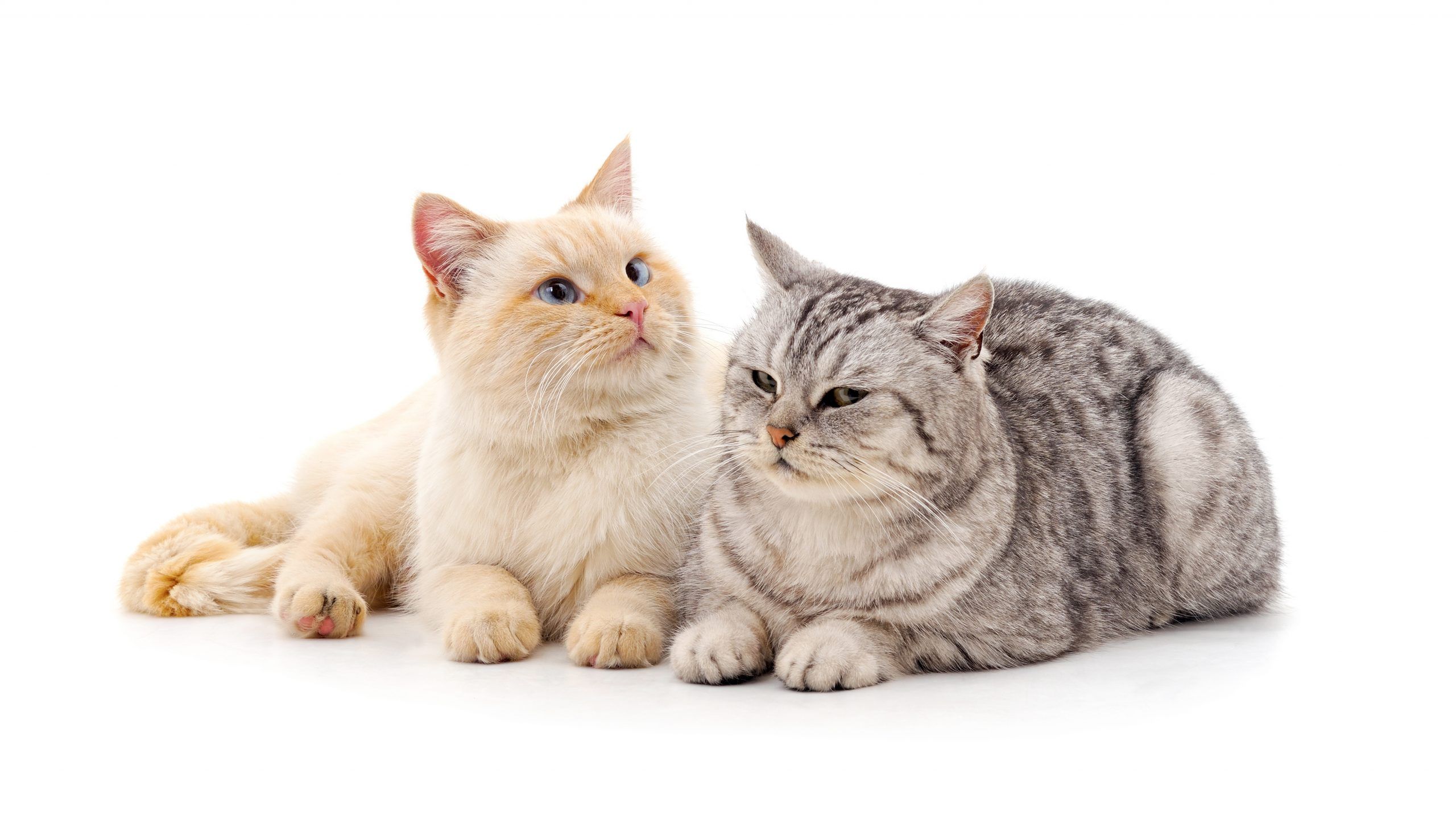Problem Solving: Introducing your New Cat to Another Cat

Once your new cat is comfortable in their own room, you can begin the process of introducing them to your resident cat. To be successful, this process should be taken slowly at your cats’ pace. Introducing the cats to each other too quickly may result in long term hostility and negative behaviours.
Start by introducing the scent of each cat to one another, this allows them to time to adjust to the presence of the other cat’s smell before physically meeting. Following this step will mean they are more relaxed when they finally meet and have a greater chance of accepting one another.
Step 1: Exchange scents
- With a clean sock (or a cloth) gently rub your cats around their face to collect some facial pheromones. These pheromones are released from your cat’s scent glands; (they are located under the chin, in front of the ears and in the cheek area).
- Place the scented sock from the new cat in the resident cat’s area of the house and vice versa. You can rub the sock on furniture such as table legs and windows sills and areas the other cat may rub against. You can do this exchange as often as needed, until both cats are comfortable.
- Offer a treat to the cats for any positive behaviour towards the sock. Positive behaviour doesn’t have to huge; it can be as simple as walking by the sock, sniffing it or rubbing on it. These are signs of relaxation and/or acceptance.
- If the cats seem relaxed and/or happy to rub onto of the other cat’s scent, you can move to Step 2.
Step 2: Seeing each other
- Partially open the door: Open the door to the new cat’s room a little during feeding time (a door stop will prevent either cat from pushing the door fully open). Feed the cats far enough apart so they don’t feel threatened but can see each other. Continue doing this for short periods throughout the day. It’s better to do several short periods a day that end on a positive note, rather than for long periods which might push their tolerance levels and result in a fight between the cats.
Note: If your cats aren’t comfortable with eating when the door is partially open then they are not quite ready to move onto the next step. - Fully Open the Door: If you feel both cats are ready to meet each other, do so under supervision and for short periods initially. Do not punish either cat for hissing or growling, this meeting is important for your cats. if hostility is growing or a fight occurs separate them, by distracting them with food or fully separating them with a pillow.
- Once the cats are happy/tolerate being around each other they can be left alone unsupervised. Make sure both cats have perches and hiding spots at low, medium and high levels. Hiding places at different levels increases the amount of vertical territory for the cats. Vertical territory helps a cat to feel safe, it prevents them from being ambushed from behind and provides an area to survey their environment.
Step 3: Short access without supervision
If friendly behaviours are seen between the two cats, you can gradually increase the length of time together. It is important that each cat has its own resources (food bowls, litter tray, bed etc) in separate rooms from each other. This will make your cat(s) feel safer and help prevent competition between them. When friendly behaviours are regularly seen the separate room can be left permanently open, allowing the cats to interact as they please.
Cats should never be punished for behaviours such as hissing or growling at one another, as they will likely associate this punishment with the other cat not with the behaviour you wish to stop. Try restarting the process slowly and rewarding them with treats for positive behaviour.
If you are struggling to successfully introduce your cat(s) or they begin fighting after an initially good introduction, please call Ten Lives or contact an animal behaviourist for professional assistance.
If the cat’s aggressive behaviour persists, and vets have ruled out any health-related illnesses causing the aggression, seek the assistance of a qualified animal behaviourist.
PROFESSIONAL ASSISTANCE:
Dr Katrina Ward, is a veterinary behaviour consultant based in Hobart, Tasmania. Dr Ward can provide professional help for a wide range of behavioural problems.
p: 0439 963 300
w: katrinaward.com.au
e: [email protected]
